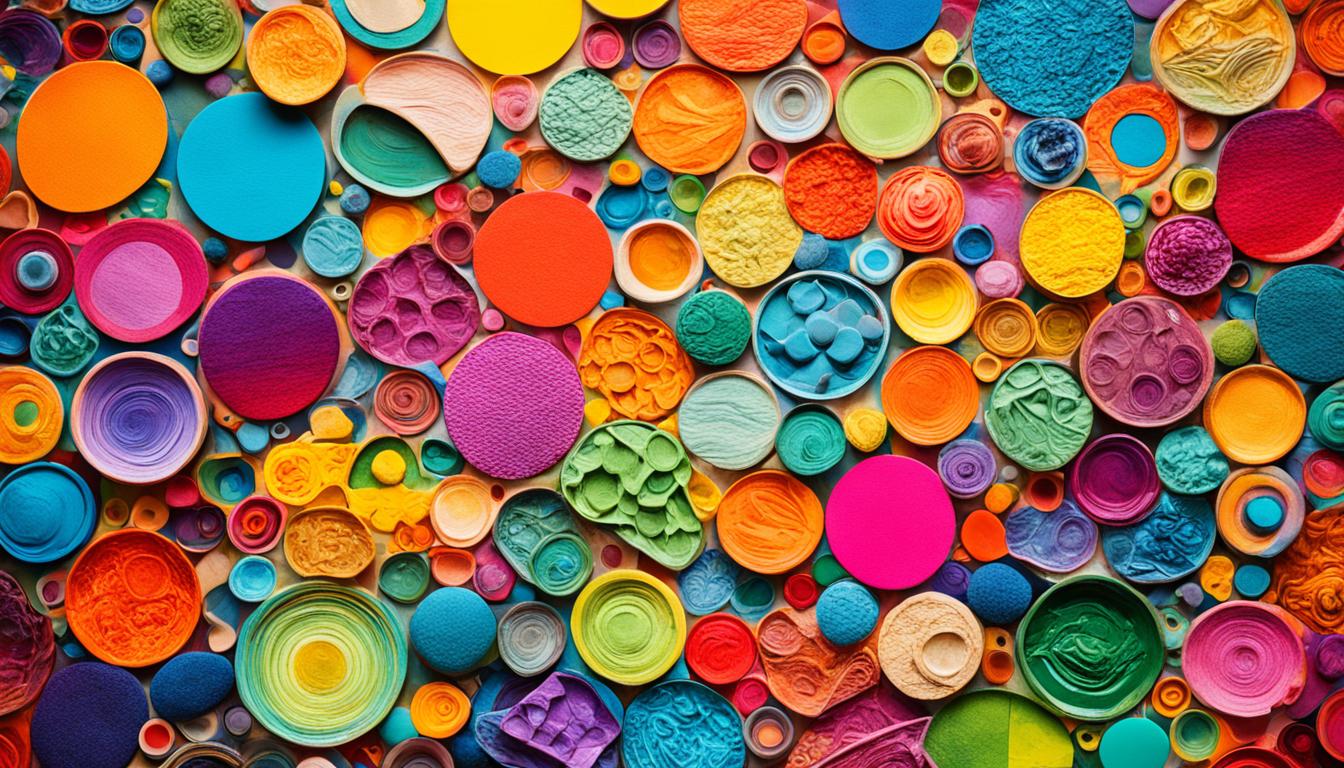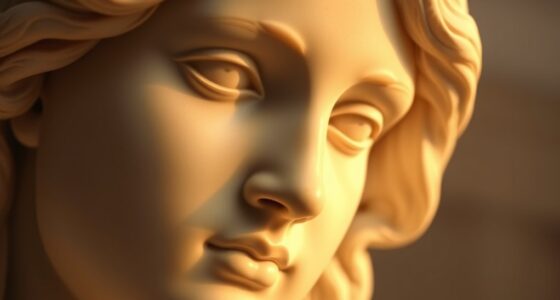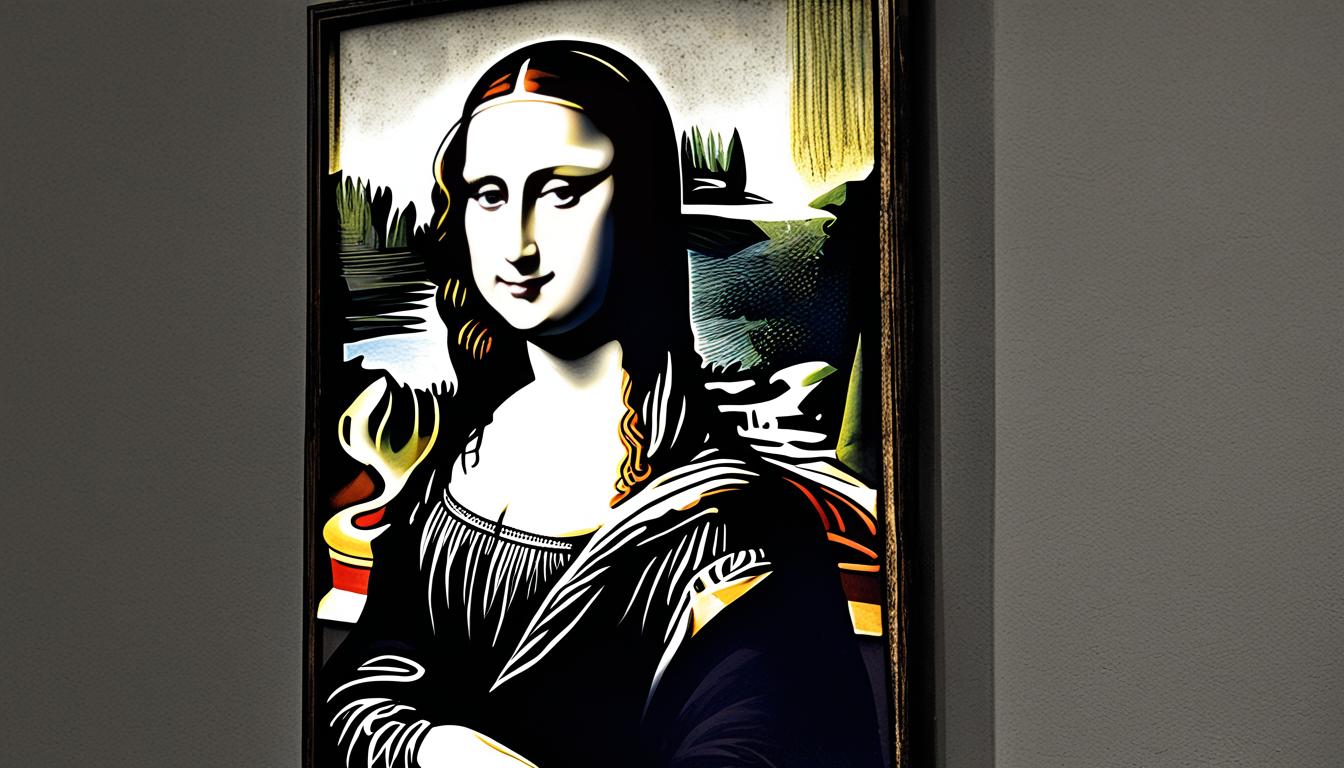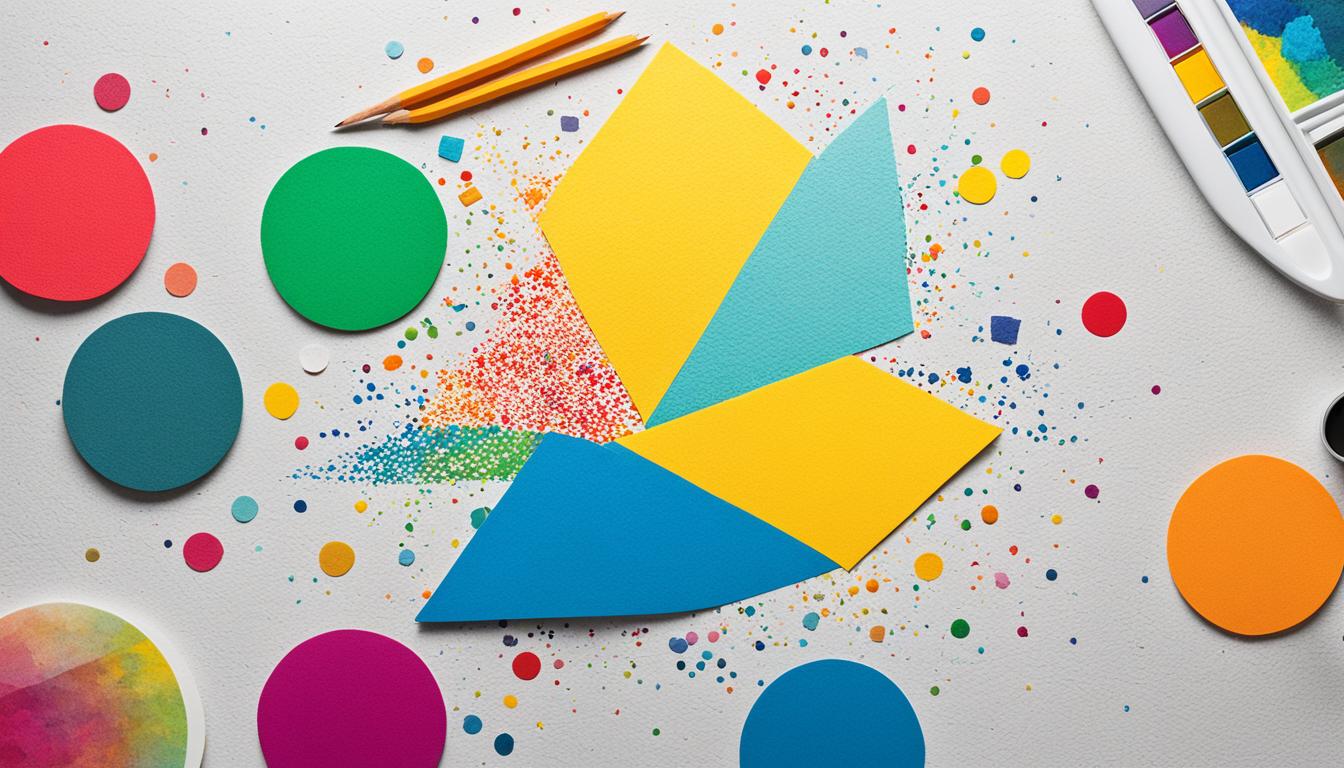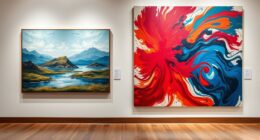Have you ever stood before a piece of art and felt an unexpected tug at your heart? Art has an incredible way of weaving itself into the fabric of our emotions and experiences. Reflecting on childhood, I remember the varied responses of little ones to art: some loved it passionately, while others found it perplexing or even boring. Yet, as time passed, a seed of appreciation grew within them. This journey of evolution—expose, encounter, explore, express, and emulate—holds the key to understanding why art appreciation is not just important; it’s transformative. Art enriches your experience by unveiling creativity you didn’t know existed, offering a new lens through which to view the world around you. In this article, we’ll explore art appreciation ideas that encourage deeper connections and foster a newfound love for creativity. With each technique we uncover, you’ll find yourself equipped not just to see art, but to truly feel it.
Key Takeaways
- Art appreciation evolves through stages: expose, encounter, explore, express, and emulate.
- Engaging with art can significantly enhance emotional connections and creativity.
- Encouraging storytelling and asking questions fosters a deeper understanding of artworks.
- Participating in art events and discussions boosts appreciation for various artistic movements.
- Understanding artistic techniques and composition deepens the viewing experience.
The Importance of Art Appreciation
Art appreciation plays a crucial role in enhancing your emotional and cognitive experiences. Engaging with art helps develop a deeper understanding of the various elements and styles, fostering a connection that is both personal and meaningful. Delving into the emotional impact of art reveals how it resonates within you and prompts reflection on feelings such as joy, sadness, or even anger. Through this engagement, you explore your perspectives and relate them to broader societal issues, enriching your worldview.
Understanding the Emotional Impact of Art
The emotional impact of art can be both profound and transformative. When observing a piece of art, you may find a complex relationship between your feelings and the emotions conveyed through the artwork. For many, art serves as a catalyst for emotional exploration, facilitating conversations about personal and collective experiences. Various forms of art trigger unique responses, showcasing the subjective nature of creativity and highlighting the importance of art appreciation in fostering empathy and emotional intelligence.
Benefits Beyond Aesthetics
The benefits of art extend far beyond mere aesthetics. Through art appreciation, you cultivate critical thinking skills as you analyze and interpret diverse artworks. Engaging with art can boost your creativity and inspire innovative thoughts, leading to personal and social growth. Art appreciation courses cover a wide range of topics, from painting to graphic design, offering valuable insights that enrich your understanding of artistic techniques. Furthermore, participating in community art projects can strengthen social connections and promote inclusivity, demonstrating the powerful role art plays in building relationships and communities.

Art History Basics
Understanding art history basics proves essential for anyone interested in enriching their appreciation of various artistic movements. By examining the evolution of these movements, you gain insight into the cultural and historical contexts that shaped them. This background equips you to recognize the significance behind each brushstroke and the intention of key artists who contributed to the world of art.
The Evolution of Artistic Movements
Artistic movements have undergone significant transformations over the centuries, each reflecting the sociopolitical conditions of its time. The Renaissance is hailed as one of the most influential art movements in history, revitalizing art through a renewed interest in classical antiquity. Innovations, such as the movable printing press developed during this era, enabled the rapid dissemination of artistic knowledge across Europe.
The following table showcases some prominent artistic movements along with their key characteristics:
| Artistic Movement | Key Characteristics | Notable Key Artists |
|---|---|---|
| Renaissance | Realism, perspective, humanism | Leonardo da Vinci, Michelangelo, Caravaggio |
| Baroque | Drama, movement, emotional intensity | Rembrandt, Bernini, Vermeer |
| Impressionism | Loose brushwork, light effects, modern life | Monet, Degas, Renoir |
| Modernism | Abstraction, experimentation, self-expression | Pablo Picasso, Wassily Kandinsky, Jackson Pollock |
Key Artists and Their Contributions
Key artists have profoundly influenced the trajectory of art history. Their groundbreaking techniques and unique perspectives ushered in new ideas and styles. For instance, Leonardo da Vinci epitomized the Renaissance man, blending science and art seamlessly in works such as the “Mona Lisa” and “The Last Supper.” Meanwhile, Pablo Picasso revolutionized interpretation through Cubism, challenging viewers to reevaluate their perception of form and space.

Art Appreciation Ideas to Deepen Your Connection
To deepen your connection with art, consider how it permeates your daily environment. Engaging with art in your surroundings allows you to appreciate the underlying artistic elements that shape your experiences. This can include everything from the design of buildings and public spaces to the vibrant murals that adorn city walls. By recognizing these influences, you start to understand the significance of art in everyday life.
Engaging with Art in Your Environment
Take a moment to explore the artistic features around you. Look for:
- Architectural details in buildings that reflect historical or cultural significance.
- Public installations that invite interaction and serve as community touchpoints.
- Local galleries showcasing the work of artists from diverse backgrounds.
Each observation enhances your ability to critically interpret art, fostering a deeper appreciation for its role in culture. Connecting with art in your environment opens a dialogue on its importance and invites personal reflection.
Exploring Art in Everyday Life
Art is not confined to galleries and museums; it exists in many forms throughout your day. Consider:
- Nature’s artistry, where landscapes and flora create a stunning backdrop.
- Design elements in everyday objects, like furniture and home decor.
- Creative expressions seen in street art and community projects.
Engaging with art in these contexts encourages mindfulness and observation, reinforcing the idea that art appreciation can be a natural part of your life. Incorporating these encounters into your routine enriches your understanding and expands your perspective.

Developing an Artistic Eye
Developing an artistic eye requires a commitment to observing artwork thoughtfully. This process enables you to engage with art on a deeper level. By honing your abilities to perceive subtle details, you can appreciate the intricate narratives and emotions embedded in each piece.
Techniques for Observing Artwork
Start your journey by employing various techniques for observing artwork. Consider the following strategies:
- Focus on color usage: Observe how colors impact the mood and emotion of the piece.
- Assess the use of light: Analyze how light defines shapes and creates depth.
- Examine texture: Pay attention to brush strokes or materials used that contribute to the overall feeling.
- Ask questions: Delve into the emotional tone and the artist’s intent behind the artwork.
These practices enhance your ability for developing an artistic eye, allowing for a richer understanding of art.
Understanding Composition and Form
The structure of a piece, known as composition in art, plays a vital role in its effectiveness. To deepen your appreciation, analyze elements such as:
| Element | Importance |
|---|---|
| Balance | Creates a sense of harmony within the artwork. |
| Perspective | Guides the viewer’s eye and provides depth. |
| Focal Point | Draws attention and communicates the central theme. |
| Rhythm | Establishes movement and flow throughout the piece. |
These elements are critical when you seek to uncover the artist’s narrative and enhance your skills in observing artwork.

Art Analysis Techniques
Understanding the intricacies of art requires a keen approach to art analysis techniques. By breaking down visual elements in art such as line, shape, and color, you can appreciate how these components harmonize to create powerful expressions. Each visual element plays a critical role in conveying the mood and intent of a piece, making analysis an enriching experience.
Breaking Down Visual Elements
When exploring works like Childe Hassam’s “The Sea” from 1892, take time to consider the visual elements at play. Look at how the brushwork, light, and texture contribute to the overall impact. Claude Monet’s “The Thames Below Westminster” from 1871 reveals how focal points—the busy jetty, boats, and the tower—guide the viewer’s experience. Each visual element invites you to examine your feelings and interpretations as you engage with the artwork.
Assessing Techniques and Mediums
Assessing techniques and mediums offers deeper insights into the artist’s choices. For example, Edgar Payne’s “Canyon Mission Viejo, Capistrano” is notable for its dominant color harmony and the warm light sources that create a sense of atmosphere. In contrast, consider Giovanni Boldini’s “Girl With Black Cat” from 1885, which showcases a simple design with an effective notan structure. Such comparisons prompt you to reflect on the emotional resonance and the artist’s intentions behind their methods.

Understanding Artistic Styles
Exploring various artistic styles allows you to appreciate the rich tapestry of different genres of art. Each genre presents unique characteristics that reflect the emotional and societal influences of its time. Understanding these elements elevates your experience, enabling a deeper connection to the art world.
Exploring Different Genres of Art
Different genres of art showcase an array of movements, each offering distinct perspectives. For instance, Romanticism celebrated emotion and individual experiences, featuring artists like J.M.W. Turner and Caspar David Friedrich. In contrast, Realism emerged to capture the extraordinary aspects of ordinary life with incredible detail, focusing on everyday scenes and the common man.
Impressionism further shifted the artistic narrative by emphasizing effects of light and color through visible brushstrokes. Artists such as Claude Monet propelled this movement, while Post-Impressionists like Vincent van Gogh and Paul Gauguin expanded its boundaries with vivid colors and structured forms.
Fauvism brought an explosion of color with Henri Matisse leading the charge, while Expressionism prioritized emotional experience with exaggerated forms that spoke volumes. Cubism challenged perceptions by illustrating subjects from multiple viewpoints, creating extraordinary geometric compositions.
Dadaism embraced chaos and absurdity in reaction to the traumatic events of World War I. Surrealism emerged shortly after, exploring irrationality and dreams, heavily influenced by the theories of Sigmund Freud. Abstract art shifted focus from representation to pure form, emphasizing color and line to evoke personal interpretations.
Later movements, including Pop Art and Minimalism, blurred the lines between high and low art, prompting reflections on commercialism, while Conceptual Art shifted attention to ideas over visuals. Nurturing an understanding of these different genres of art allows you to appreciate not only their beauty but also their historical significance.
Recognizing Historical Context in Art
Gaining insight into the historical context in art enriches your understanding of the artists’ visions and their works’ roles in society. Recognizing the circumstances under which different artistic styles emerged provides a backdrop for appreciating innovations and experiments. For example, the chaotic undertones of Dadaism arose from societal upheaval, while the optimism of Impressionism reflected a changing world.
This context enhances your appreciation by revealing how social, political, and cultural factors shape artistic expression. Whether examining the dramatic emotional resonance of Romanticism or the simplicity embraced in Minimalism, placing these works within their historical framework illuminates their relevance and significance to contemporary audiences.

Interpreting Artistic Symbolism
Artworks often carry a wealth of messages through their use of symbols, crucial to understanding the deeper meanings behind the pieces. By interpreting artistic symbolism, you can uncover hidden narratives and resonate with the artist’s intentions on a more personal level. Throughout history, artists have employed symbolism in art to convey emotions, address societal issues, or express intimate sentiments.
Color choices play a pivotal role in the symbolism of art. For instance, vibrant reds might evoke passion, while tranquil blues can inspire calmness. Each hue has its own set of emotional and conceptual associations, making color an essential tool in an artist’s repertoire. Take note of how these choices can shift the mood or alter the message presented in a piece.
Many iconic artworks feature distinct symbols that require context for full appreciation. An analysis of Erwin Panofsky’s iconography reveals how societal norms and cultural understanding shape interpretations of symbols within art. For example, Van Eyck’s “Giovanni Arnolfini and his wife Giovanna Cenami” employs various symbols that have led to diverse debates about its meaning.
Incorporating elements from semiotics can enhance your understanding of symbolism in art. This analytical approach classifies signs into three types: icons, indexes, and symbols. All of these contribute to the broader communication between the artwork and its audience, enriching your engagement with the art. A practical exercise could involve selecting a piece and identifying its symbols, deciphering their meanings, and exploring connections to cultural codes.

Learning to interpret artistic symbolism encourages a meaningful dialogue with the artwork, fostering a deeper emotional connection. By immersing yourself in the symbols and colors that resonate most deeply with you, the experience becomes a personalized journey of discovery, enhancing your overall appreciation of art.
Art Appreciation Activities
Engaging in art appreciation activities can significantly enhance your overall connection with art. This section explores various avenues where you can express your creativity and develop a deeper understanding of artistic concepts. For example, you can attend art exhibitions and discuss the pieces with friends or join a local art club to participate in group discussions. Another way to engage in art appreciation is to start a personal art journal where you can document your thoughts and reactions to different artworks. Additionally, you can explore art appreciation paper ideas by researching different art movements or analyzing the symbolism in specific artworks to further expand your understanding of art.
Creating Personal Art Projects
Starting personal art projects is a great way to channel your creativity. Whether you experiment with painting, drawing, or mixed media, using easily accessible materials makes it straightforward. For example, “Art Around the World in 30 Days” offers a set of projects inspired by different cultures, encouraging you to explore global artistry. Similarly, activities like “Kandinsky for Kids Process Art” and “Art Study: Frida Kahlo” allow for personal interpretation while applying learned techniques. The flexibility of these projects invites you to make your artistic expression unique, thus enriching your appreciation for art.
Attending Workshops and Classes
Participating in workshops and classes can further expand your art appreciation. Many local studios and online platforms provide opportunities to work with professional artists. Classes often focus on various techniques such as splatter painting, inspired by Jackson Pollock, or stenciling spray painting similar to Banksy’s style. Engaging in these activities not only imparts practical skills but also fosters a community around art. Positive reviews from parents in the context of children’s art classes highlight the benefits of participation. These experiences can ignite new ideas and creative thinking that extend into your daily life.

Art Museum Visiting Tips
When planning a trip to an art museum, it’s easy to feel overwhelmed. The vast spaces and numerous artworks can turn a visit into an exhausting experience. To mitigate this, consider these art museum visiting tips that focus on maximizing your museum experience. A well-thought-out approach transforms your visit into a more meaningful endeavor.
Maximizing Your Museum Experience
Researching artists and current exhibitions in advance can significantly enhance your visit. Familiarity with featured pieces prepares you to appreciate them fully once you arrive. Instead of trying to view every artwork, concentrate on a few that interest you. Taking your time allows you to engage deeply with the art, leading to richer insights. Surveys suggest that over 50% of visitors find their experiences enhanced when they come across unexpected art pieces. This serendipity fosters a delightful connection to the museum.
Engaging with Guides and Curators
Engaging with guides and curators during your visit offers access to expert insights, further enriching your understanding of the artworks. Many museums provide audio guides and facilitated tours, making intricate details accessible. Collectively, 70% of visitors at immersive locations express a preference for thoughtful engagement with the exhibits. Bringing a friend along can also open up avenues for shared interpretations of the works. By exploring different viewpoints, you may discover new aspects of the art you hadn’t considered.

| Tips | Description |
|---|---|
| Research Beforehand | Learn about current exhibitions and notable artists to focus your visit. |
| Focus on Favorites | Select a few pieces that intrigue you to engage more deeply. |
| Utilize Guides | Take advantage of audio guides and curator-led tours for enhanced context. |
| Visit with a Buddy | Exploring with a friend can lead to diverse interpretations and experiences. |
| Balance Your Time | Manage museum fatigue by pacing your visit and allowing for breaks. |
Conclusion
In the wrap-up on art experience, you’ve embarked on a journey that blends emotional engagement, analytical insights, and personal discovery. Exploring art through historical context, creative projects, and active museum visits not only enriches your encounters but also broadens your understanding of artistic expression. As you delve deeper, you’ll find that the appreciation of art is not merely about observing beautiful works, but about unlocking new perspectives and expressions that resonate with your unique experiences.
The complexity of art appreciation extends beyond learning the essential elements of visual art like line, color, and form. It invites you to engage with diverse principles of art such as balance, rhythm, and focal points, which all contribute to the emotional impact of color and composition. Recognizing the labor behind art creation enriches your respect for artists and their interpretations, fostering a meaningful connection between the viewer and the artwork.
Ultimately, embracing these art appreciation ideas cultivates a richer perspective on beauty and creativity in everyday life. Beauty can be found even in the most unexpected forms, reminding you that art is a vibrant reflection of human experience. As you continue to explore and appreciate various artistic styles and movements, you’ll discover a personal connection with the world of art that inspires you regularly.

